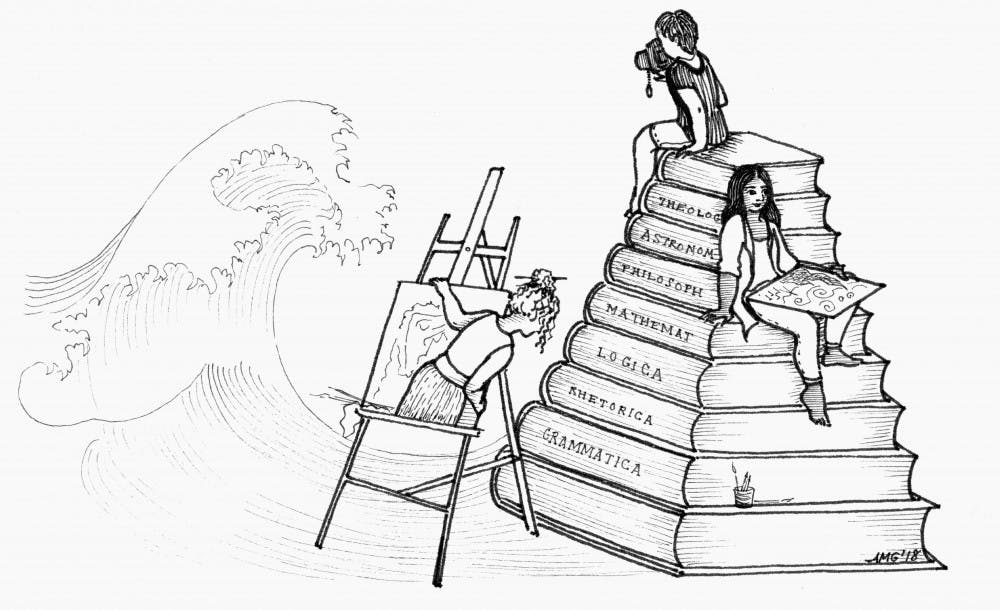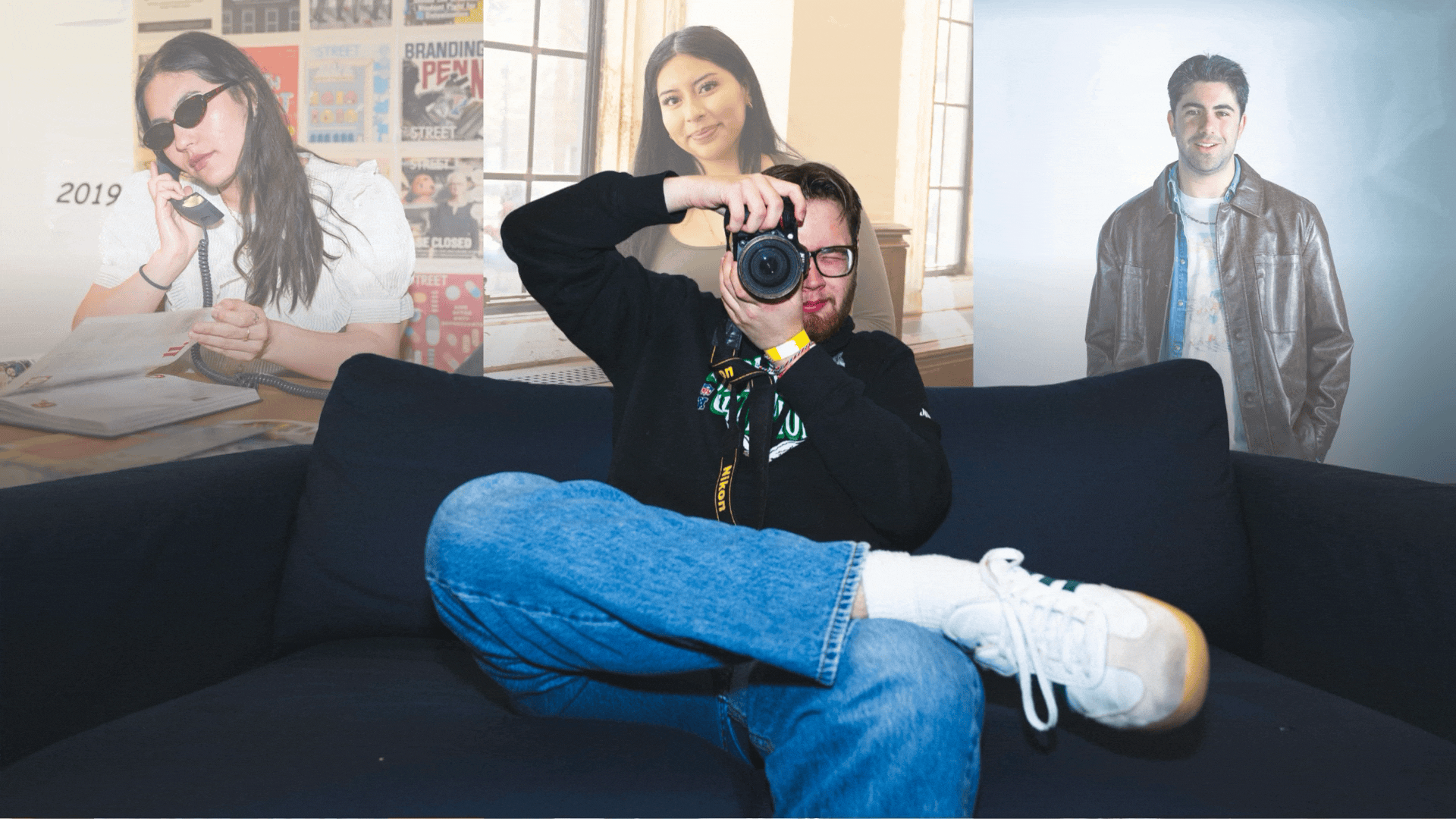In higher education, potential visual arts and graphic design majors have three choices: 1) Attend an art school, 2) Attend a large university with a visual arts department, or 3) Attend a university with an art school. It’s a Goldilocks situation: soft, medium, or hard art. The decision comes down to choosing between one of pure art or one that mixes the fine and liberal arts. But what distinguishes studying art in a college setting from pursuing an art degree at an art institute? Why do we even fathom taking art classes somewhere where art is eclipsed?
Studying art in a college setting, or at least at Penn, requires less commitment and de–emphasizes competition. That's not to say that the program itself is any less rigorous. But the tendency is that most students taking fine arts classes come in with very little experience. “They take some risks, venture into intro–level art classes, and realize that fine arts is something they want to major or minor,” says Matt Neff, the Director of Undergraduate Program in Fine Arts.
Unlike art school students, the life of an art student at a non–art school university is not in constant interaction with the arts. Because of a wider array of options, they have the opportunity to delve into other fields, whether or not they complement their artistic pursuits. “There’s more art if you go to an art school but at the same time there’s more stress and competition,” says Cathy Shang (C ’20), a fine arts and pre–med student. “Coming in to classes, we’re not expected to know a lot of art. And most of the time we’re not doing it for a career so it’s not that competitive.”
Art classes in a university are more of a fusion of art and liberal arts. Most universities teach art as an academic discipline, with an emphasis on verbal analysis, problem solving, and critical theory in addition to craft and technique. Professor Neff describes it as “thinking, reading, making all together.” While studio classes focus on practice, critique, and creative problem solving projects, seminars center on critical writing, reading, theory and discussions.
In Professor Neff's printmaking class, he asks students to think about the democratic process of the multiples and how printing has been a political tool for propaganda before students start to work on their own projects. “There is a creative thinking and problem solving component in the class,” Neff explains. “It encourages students to think about their project in a new way. It even invites the students to question what they’re doing.”
Fine arts students at Penn may not have as many resources and facilities for the actual making of art as art institute students. However, what they can do is utilize the entire university and have access to a wealth of interdisciplinary opportunities—which is, after all, what Penn prides itself on. Here, they can combine their diverse interests, meet students from across the spectrum, and merge the different fields. Fine arts in a college setting leads to all sorts of developments beyond professional success that should not go overlooked. And for those who want to pursue art professionally, Penn has a lot to offer.







